I noted this burrow on the bank of the Trinity River while out on a hike early one morning back in May. There was plenty of evidence around to suggest what type of critter lived here. The size of the entrance, the well-worn path leading up from the water, and the bark-stripped branches floating in the river below all indicated that there was at least one, rather large American Beaver calling this den home.
A Beaver den on the river—while not uncommon—was new in my experience. Previously, I had only ever encountered Beavers in smaller bodies of water—like creeks and ponds.

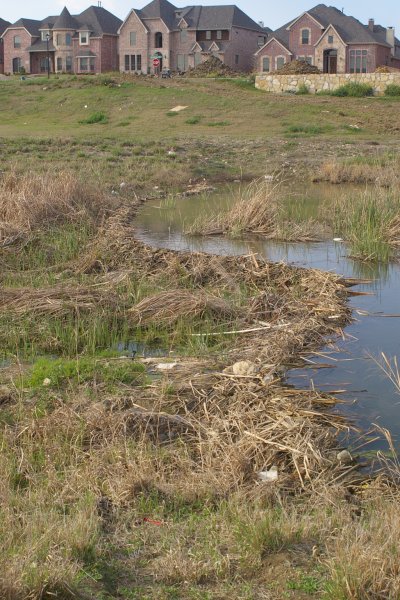
In Dallas/Fort Worth it is not uncommon to find a Beaver dam on a small creek, even in urban areas. Often these busy and resourceful little rodents will take up residence and build their dams right in the middle of a busy subdivision or business park, if there is a water feature that provides adequate resources. In places where there are not enough trees to provide branches for dam construction, these adaptable creatures will build their dams and lodges using a mixture of packed mud and reeds.
Beavers work diligently to take down trees and clear vegetation from the perimeter of their impoundments. The result is often a nice water feature that creates an excellent habitat for many other species of wildlife. Fish, reptiles, amphibians, and a host of invertebrates thrive in these environments. Herons and egrets come to feed on these organisms. Raccoons arrive with similar objectives in mind. Ducks and other waterfowl are attracted to the safety of the open water. Predators like Bobcats, Coyotes, and hawks come to hunt the others.
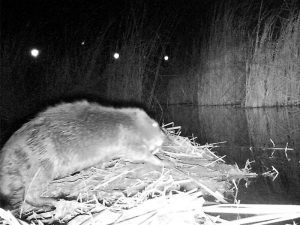
It is said that Beavers are inspired to construct their earthen works by the sound of flowing water. In a man-made environment, this can lead to some very uniquely shaped and geometric dams.
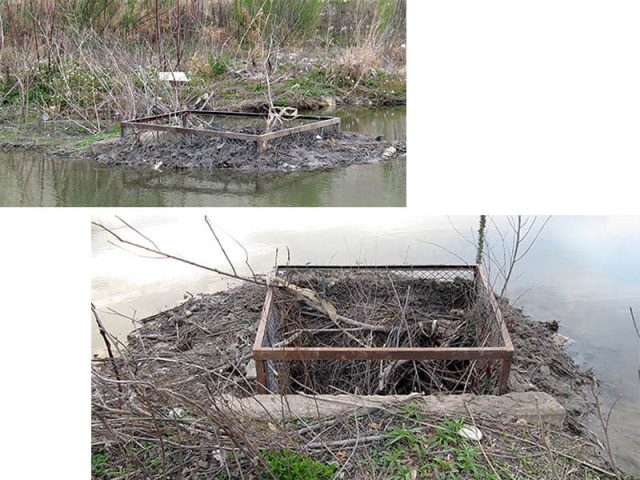
We have a lot of beavers in the Dallas/Fort Worth Metroplex. I find signs of their activities frequently, and I come across their bones and remains more often than with any other mammal in North Texas.
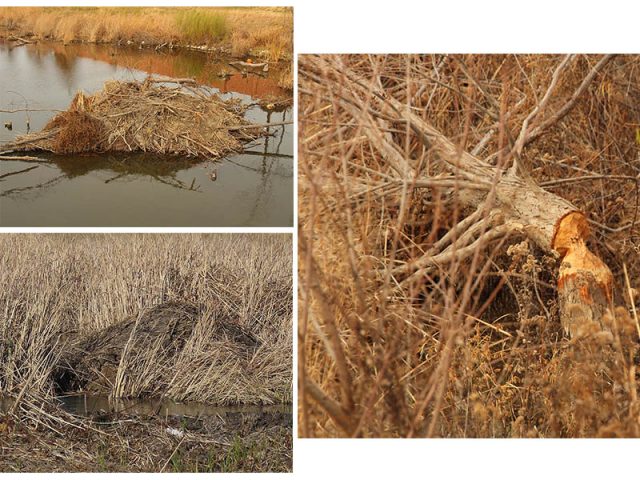

Wikipedia has this to say about beavers:
The beaver is the largest rodent in North America and competes with its Eurasian counterpart, the European beaver, for being the second-largest in the world, both following the South American capybara. Adults usually weigh from 11 to 32 kg (24 to 71 lb), with 20 kg (44 lb) being typical
The beaver’s fur consists of long, coarse outer hairs and short, fine inner hairs (see Double coat). The fur has a range of colors, but usually is dark brown. Scent glands near the genitals secrete an oily substance known as castoreum, which the beaver uses to waterproof its fur.
Beavers are active mainly at night. They are excellent swimmers and may remain submerged up to 15 minutes. More vulnerable on land, they tend to remain in the water as much as possible. They use their flat, scaly tail both to signal danger by slapping the surface of the water and as a location for fat storage.
Beavers are best known for their dam-building. They maintain their pond-habitat by reacting quickly to the sound of running water, and damming it up with tree branches and mud. Early ecologists believed that this dam-building was an amazing feat of architectural planning, indicative of the beaver’s high intellect. This theory was tested when a recording of running water was played in a field near a beaver pond. Despite the fact that it was on dry land, the beaver covered the tape player with branches and mud.
The purpose of the dam is to create deepwater refugia enabling the beaver to escape from predators. When deep water is already present in lakes, rivers, or larger streams, the beaver may dwell in a bank burrow and bank lodge with an underwater entrance. The beaver dam is constructed using branches from trees the beavers cut down, as well as rocks, grass, and mud.
I returned to the den site on the Trinity River a few days later. I arrived while it was still dark and the river water was black. Beavers are generally nocturnal in their habits, and I was hoping to catch this one returning to his den as dawn began to break.
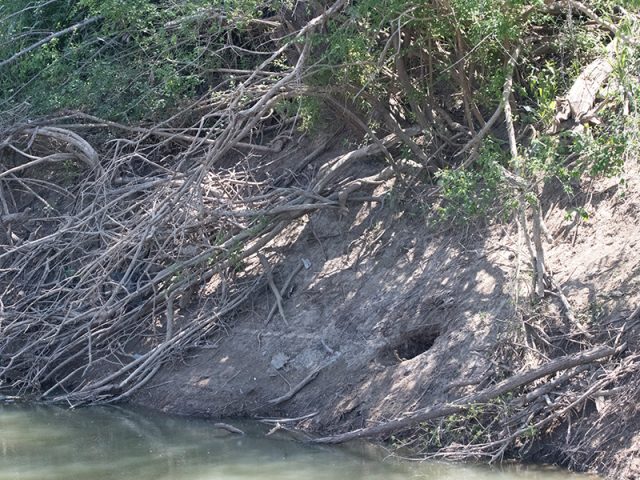
The den was located just a few feet above the water on the west side of the river. I would be approaching from the east, and the sun would be coming up behind me. My plan was to use the blinding rays of the rising sun as concealment while I waited for the Beaver to return. If it worked the Beaver wouldn’t know he was being watched, allowing me to observe relaxed and candid behavior.
I took up position on the east bank just as the first light of dawn was touching the sky. This spot offered an excellent view of the den on the other side of the river, and plenty of concealment. I began to wait.
But, I barely had time to settle in and get comfortable before the beaver popped his head out of the still river water. He held his position just below the den entrance, gaining confidence he was not in danger. After an extended moment, the big beaver shook himself off and doggedly climbed the steep, muddy bank up to his burrow. A slick wet trail of river mud marked his route.

As the beaver reached the den he paused again, this time sitting on a narrow ledge just outside the entrance. He did one more safety check, then rolled over to sit on his rump, and began grooming.
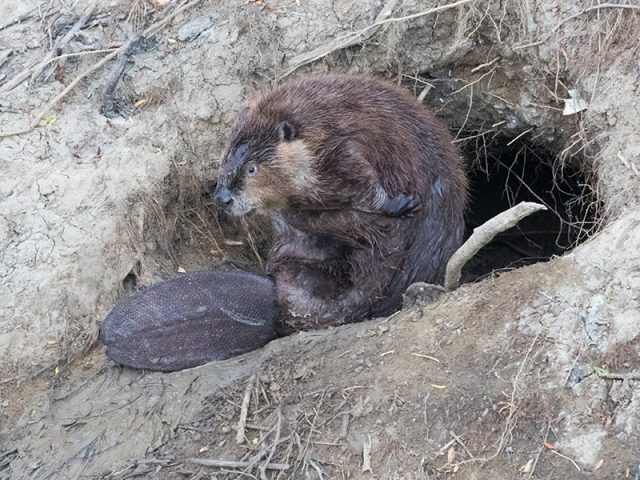
This grooming behavior is very important to beavers and they engage in it regularly to help waterproof their fur. Through this action they access oil producing glands near the base of their tails. They collect the oil on their front paws and massage it into their fur. It can take a substantial amount of time to do a thorough job and address the entire coat. The time stamps on these pictures show that this beaver was busy grooming for nearly 20 minutes before he considered the job done.

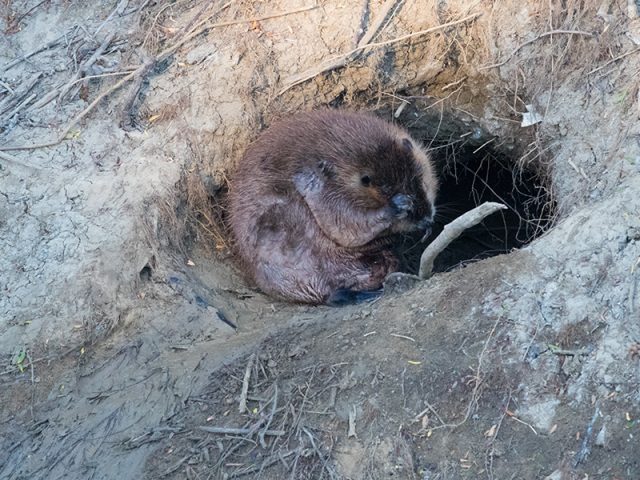
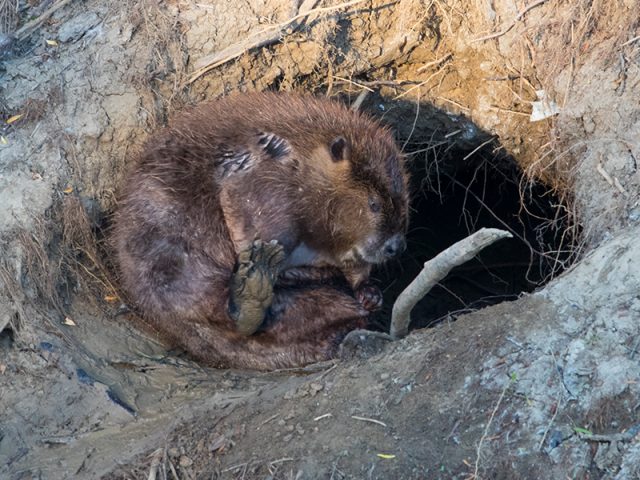
Through it all I was taking pictures from my vantage point high above the river. As the sun continued to rise behind me, I noticed that its rays were slowly beginning to illuminate the far bank high above the beaver’s den. As the morning wore on, the sunlight crept further and further down the west bank. The light was steadily making its way down to the beaver’s den entrance, and the beaver seemed to be keeping close tabs on this situation. I wondered at what point the beaver would finally enter his den.
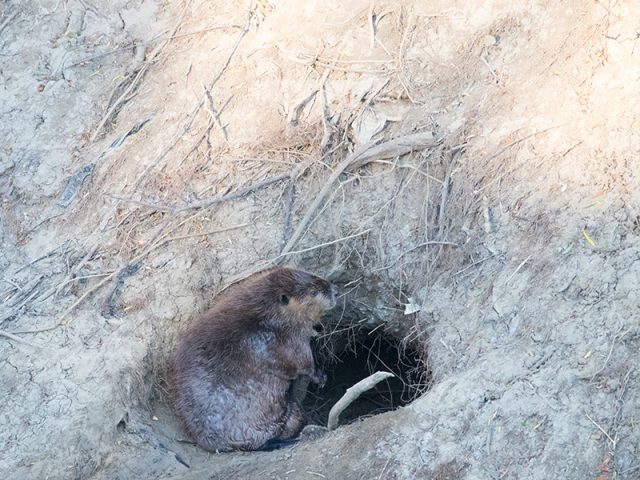
I soon had my answer. At the precise moment the sun’s rays began to warm the top of beaver’s head, he stopped his grooming, rolled towards his den’s entrance, and slowly sauntered inside. Soon he was gone from sight, disappeared into the depths of his burrow.
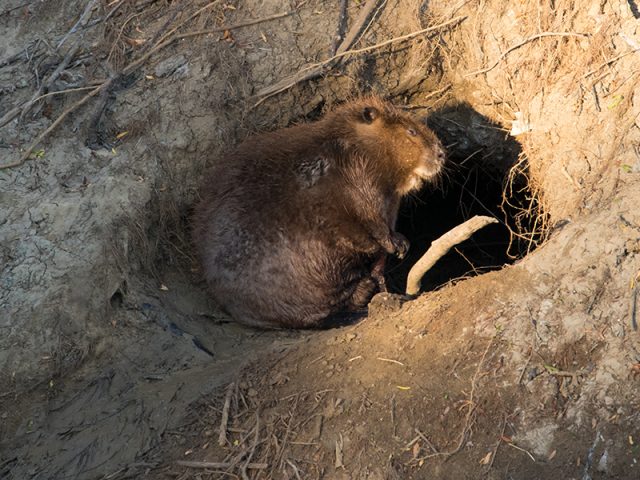


True to his nocturnal nature, the Beaver gave way to the day at the exact moment the direct rays of the sun hit his position. The American Beaver’s inclinations to be active mostly at night means we rarely get an opportunity to observe these animals at length. Even less frequently are they found in a situation which is conductive to photography.
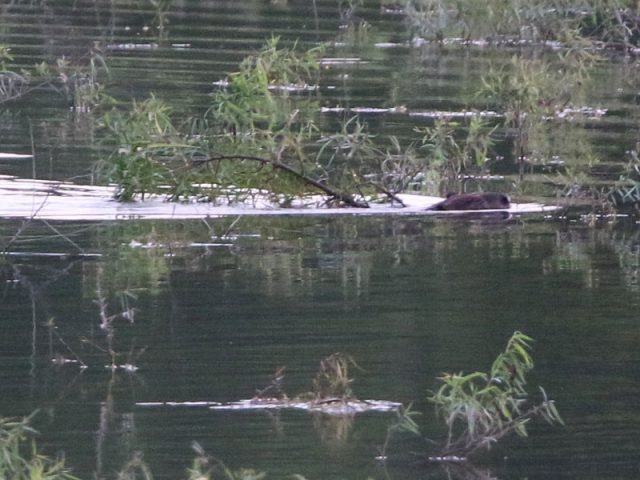
This had been the best look yet I had of an American Beaver. Having the opportunity to observe this grooming behavior was quite a privilege. Being able to come away with this nice set of pictures made this encounter really special!



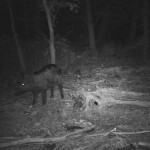
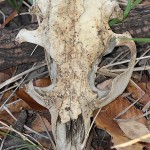
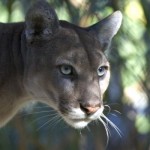
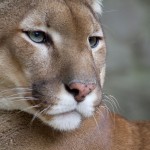
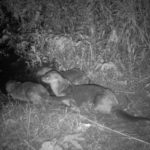
Great photos of the Beaver grooming ! That was obviously a special encounter.
Congratulations on a great payoff to your efforts. Superb documentation of the beaver’s behavior.
Fabulous photos and reporting! Thanks for giving us a glimpse into the beaver’s world.